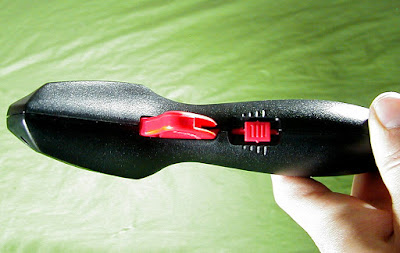Well, probably not the kind of rehab that you’re thinking of. In this case a slot car is being rehabilitated.
In the 1950’s and 60’s companies such as Strombecker, Eldon, Marx, Cox and others were manufacturing high quality slot cars for the home enthusiast. These cars were, for the most part, well detailed and the bodies were scale accurate. Their chassis were often made from brass or aluminum and although considered primitive by today’s standard, were truly state of the art for mass-produced, ready-to-run slot cars at the time.
We know that they were high quality because many of them are still around and running on slot car tracks today. And, if in pristine condition and good running order, they can be considered collectible.
Naturally the pristine examples are relatively rare. The majority tend to show the effects of decades of hard racing and/or storage in less than ideal conditions. In most cases the chassis is damaged or just worn out, and replacement parts are virtually non existent. And the body may be missing parts such as the windshield, driver’s head or mirrors. But if the body shell is in reasonably good shape, without breaks, cracks or major deformity, then it is a prime candidate for “rehabilitation”. This involves refinishing, or at least cleaning up the body and building or obtaining a new, more modern chassis.
While perusing the major auction site one day, I was lucky enough to win a Strombecker Ferrari Dino 206 S (pictured below) for a very reasonable price.
The body was in excellent condition with only a small piece missing from the top of the windshield and some discoloration under the number rondel sticker. The overall surface was good with only minor scratches.
The chassis is typical of Strombecker cars that were included in a boxed racing set. Its condition was among the best I have seen in a home market car from this era. I feel that it probably put this car in the collectable category. However, because my goal was to modernize and not restore, I had no use for the chassis. In fact, I was able to sell the chassis for about the same price that I paid for the entire car.
The rehabilitated Dino 206 S is pictured below.
The driver, interior, wheels, inserts and tail lights were the only items that were painted. The tail lights were re-chromed and then painted with translucent acrylic stoplight red paint.
Decals are for an early 1970’s Ferrari Formula 1 car and were provided by Indycals Decals.
The windshield wiper, roll bar and rear view mirror were scratch built from styrene stock and scrap. The rear grills were fashioned from wire mesh coffee filter screen brushed with acrylic silver paint.
The finished body and windshield were clear coated with Future floor polish.
The chosen chassis is a PCS 32. This is an inexpensive, basic, adjustable wheelbase chassis that has a simple straightforward set up yet performs very well.
Chassis components:
• Crown gear: Slot.it 27z
• Pinion: Ninco 9z
• Bushings: Slot.it brass
• Axles: Ninco 3/32
• Guide: ScaleAuto
• Wheels/inserts: BWA
• Tires: Ninco Classics for the A/C Cobra
The PCS 32 chassis is ideal for the typical Strombecker body because the original mounting posts are adaptable to the chassis. Mounting post inserts were fabricated by gluing (plastic epoxy) 1/8” styrene tubing inside 3/16” styrene tubing. The combination tubing is then cut to the approximate length and glued inside the existing mounting posts and sanded down to achieve proper stance and ride height. A hole is then drilled in each of the chassis side boards to accommodate the screws that secure the two rear mounting posts.
§ § § § §
I think that it’s great that a 55 plus year old slot car can get a new lease on life and be running around a slot car track, where it belongs, once again. So if this kind of project appeals to you, keep an eye on the Internet auction sites for one of these cars. In many cases the body may be offered alone so that you don’t have to buy a chassis that you really don’t want. Let’s get these beautiful slot cars back on the track — they deserve to be there.
_Michael Ashton










































